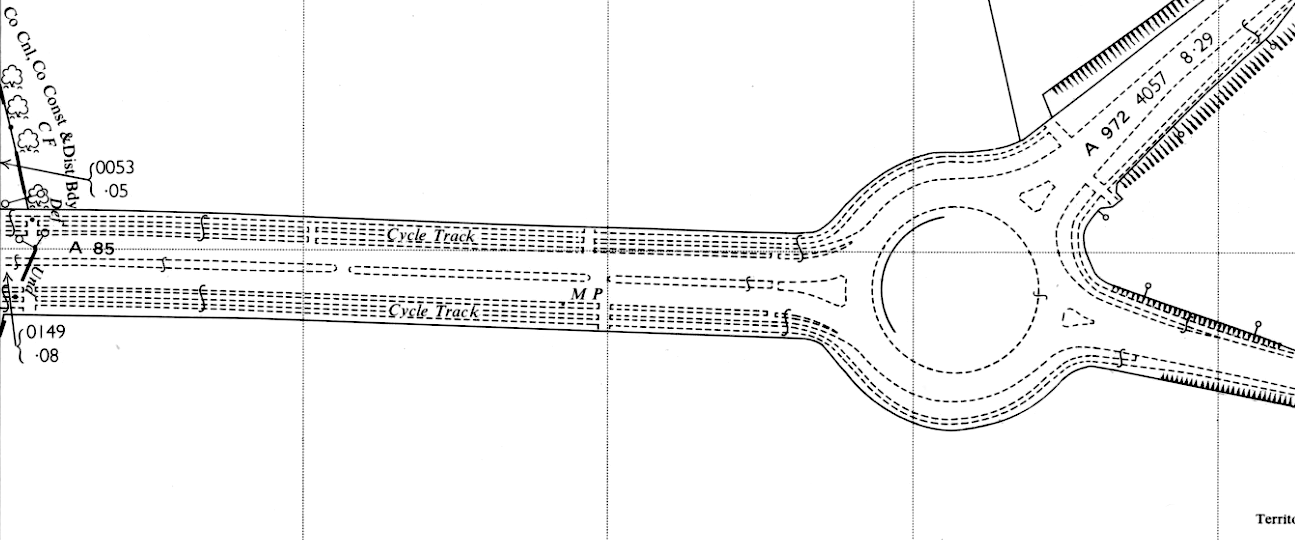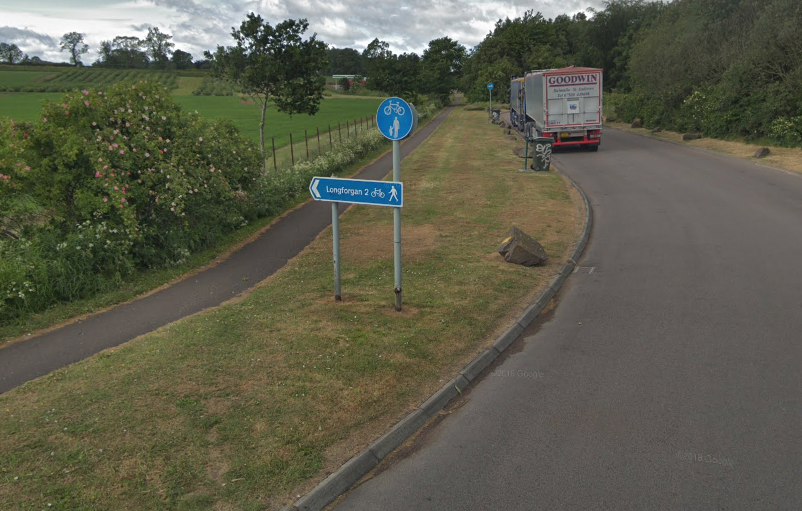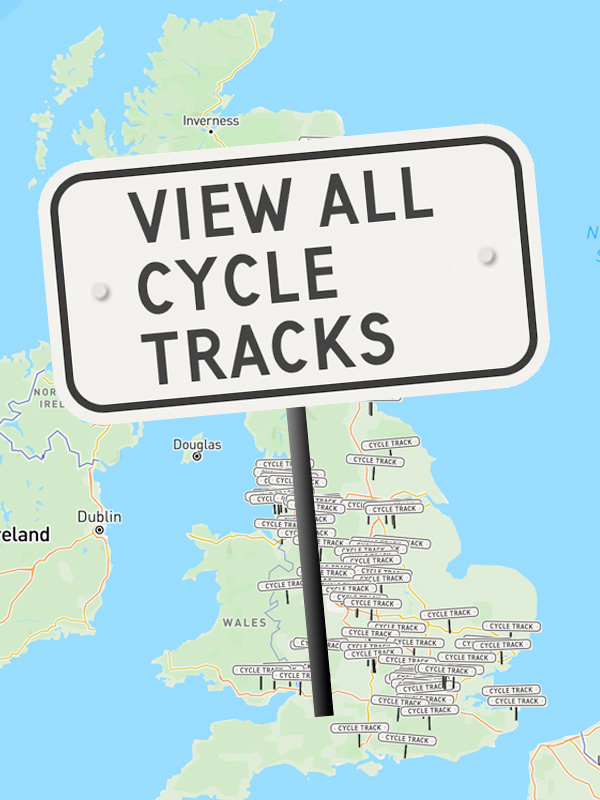
OS period map of the A85 at Longforgan showing cycle tracks.
The bypass of Longforgan was largely built by 1939, complete with cycle tracks and footways, but finishing work appears to have stopped at the outbreak of war, with the road not completed until 1946 or 1947. Newspaper reports say there were cycle tracks and footways on both sides of the bypass, but there’s only one shared use path in evidence today.
(This path ends, oddly, at a large road sign with no surfaced forward progress for either cyclists or pedestrians.)
News of the bypass was first revealed in 1938.
“The Minister of Transport has asked Perth and Kinross County Council to put in hand immediately the scheme for the widening and modernisation of the Perth-Aberdeen-Inverness trunk road (A85) between Longforgan and Invergowrie for a length of about one mile and three-quarters,” stated a news report in The Scotsman in December 1938.
“The existing road has a single carriageway 21 feet wide and there are also a few lengths of narrow footpath,” continued the report, adding that the “number of vehicles using the road approximates to 3000 daily. The road is also used by many pedal cyclists.”
“At a cost of about £50,000, it is proposed to widen the road to 100 feet; and to provide dual carriageways, cycle tracks and footpaths,” said the report.
“The carriageways will be 22 feet wide and the cycle tracks 6 feet.”

The start of the Longforgan bypass is now a layby.
Six months later the Dundee Courier reported that the “laying of the dual carriageway is going ahead. One carriageway is complete, and in use, and the cycle track and footpath of generous width are coming into being.”
At the end of 1939 the Perthshire Advertiser reported that the “dual carriageway had already been constructed” but that the budget for the scheme had been halved through the “elimination of the cycle tracks, footpaths and the round-about at the junction.”
The roundabout — https://goo.gl/maps/v1Da1xL7UEXDK1Mf9 — is period with a modern lay-by being the original route of the road, complete with cycle track.
The start of WWII caused the bypass — with its partially completed cycle tracks and footways — to be mothballed, it can be inferred from a letter to a newspaper in 1946.
“Were ever rates more uselessly expended than in remaking cycle tracks skirting the highways between Bullionfield and Longforgan?” griped ‘Villager’ to the Dundee Courier.
“Twenty men have been employed for months on these tracks, laying foundations of tarmac and finishing them with asphalt,” the complainant revealed, adding that “cyclists never used these tracks — there are three of them — and never will.”
“Better get on with the bypass road skirting Longforgan,” argued ‘Villager’ stating that “heavy traffic passing through the village” was a “real menace.”
Notwithstanding this complaint the cycle tracks and footways were completed each side of the bypass, reveals a 1950 newspaper report.
The road had “two cycle tracks, two footpaths, and two verges,” reported the Dundee Evening Telegraph.









